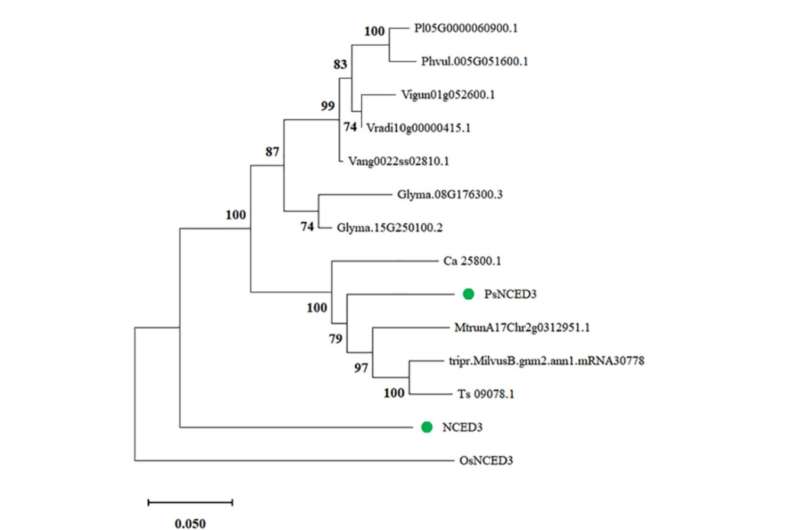Artificially modulating stomatal development may improve crop stress tolerance

Two MYB transcriptional regulators, FLP and its paralogous AtMYB88, redundantly regulate the symmetric division of guard mother cells and the abiotic stress response in Arabidopsis thaliana. Only one orthologue gene of FLP has been identified in pea (Pisum sativum FLP; PsFLP).
The study of stomatal development in pea is of great significance for the improvement of some important agronomic traits in legumes. However, studies on the biological function of PsFLP in pea have never been reported.
In a study published in Physiologia Plantarum, researchers from the Xishuangbanna Tropical Botanical Garden (XTBG) of the Chinese Academy of Sciences and their collaborators investigated the gene function of PsFLP using virus-induced gene silencing (VIGS) technology.
By silencing PsFLP with VIGS technology, the researchers obtained pea strains with abnormal stomatal clusters, suggesting that PsFLP may be involved in the symmetric division of stomata. The number of stomatal units per unit area was significantly higher in the silent strains than in the wild type.
The quantitative real-time PCR (qRT-PCR) data showed that PsFLP could inhibit the expression of CYCA2;3 and CDKA;1 and positively regulate the expression levels of AAO3, NCED3, and SnRK2.3 in Arabidopsis thaliana.
Thus, PsFLP not only regulates the symmetric division of stomata, but also may regulate ABA synthesis genes and transduction genes, thereby participating in drought stress response pathways.
“Our study provides new insights into improving plant stress tolerance by artificially modulating stomatal development,” said Prof. Chen Jianghua of XTBG.
The results suggest that appropriately changing the number of stomata and adjusting the stomatal density can maintain the photosynthetic rate of plants and effectively prevent water loss, enhance the drought resistance of plants, and improve crop yield.
More information:
Conghui Ning et al, An R2R3 MYB Transcription Factor PsFLP Regulates the Symmetric Division of Guard Mother Cells During Stomatal Development in Pisum sativum, Physiologia Plantarum (2023). DOI: 10.1111/ppl.13943
Citation:
Artificially modulating stomatal development may improve crop stress tolerance (2023, June 7)
retrieved 7 June 2023
from https://phys.org/news/2023-06-artificially-modulating-stomatal-crop-stress.html
This document is subject to copyright. Apart from any fair dealing for the purpose of private study or research, no
part may be reproduced without the written permission. The content is provided for information purposes only.
For all the latest Science News Click Here
For the latest news and updates, follow us on Google News.

